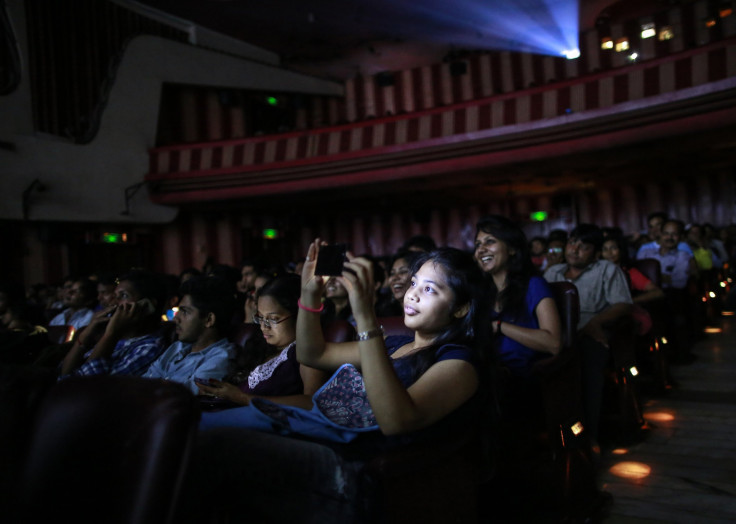Is India Apple's Next China? iPhone Sales On Track To Double On Phablet-Hungry Subcontinent

BANGALORE -- India is in a love affair with big phones. It isn't uncommon to see an urban Indian riding in the back seat of a pedicab or seated at a cafe with a 7-inch or 8-inch tablet affixed to his ear.
Once, that was almost always a phablet made by Samsung Electronics Ltd. But no longer: Increasingly it's an Apple Inc. iPhone 6 Plus.
The iPhone 6 is seeing strong demand in India, in part because Apple now has a phablet that the Indian upper middle class appears willing to pay for. Just as Apple has seen unprecedented demand in China, the supersized iPhone is helping to boost Apple on the subcontinent. Early numbers indicate sales are on track to double to 2 million in India, up from just several thousand a few years ago.
Even while overall smartphone sales in India have slowed over the past six months, sales of the iPhone 6 are accelerating. “Apple’s iPhone shipments remained strong,” Tarun Pathak, a senior analyst at Counterpoint Technology Market Research, wrote in a recent post on India’s smartphone market, “thanks to its strong marketing push and enticing schemes such as buybacks and more.”
The company is “only a few thousand units short” of selling 1 million iPhones in the first six months of its current fiscal year, Pathak wrote. This puts Apple on track to double sales in India for the full fiscal year, including sales of the 5S, 5C and the 4S that are still available in India. The 12 months ended Oct. 31, 2014, was the first time Apple sold a million phones in a fiscal year in India, according to Counterpoint Research data.
Phablet Wonder
To put the 2 million iPhones in 2015 in perspective, Apple was only selling in the thousands in India until about two-and-a-half years ago, when the company decided to change tack.
By contracting with multiple national-level distributors, partnering with banks to back financing, offering deep discounts on older models and providing buyback schemes, Apple has seen Indians take to the iPhone like never before. More recently, with the launch of the iPhone 6, the company also has tied up with Vodafone Group to offer zero-down-payment plans to make the phones more affordable.
One important reason for the iPhone 6’s success is that, in phablet-crazy India, Apple’s first large-screener was bound to attract attention. “What is happening is, the iPhone 6 seems to be winning back a chunk of those Apple loyalists who had left the older iPhone models in favor of Android for the larger screens,” Pathak said.
Across price segments, Samsung’s large-screen models have been very popular in India, from the premium-level Note series to more midrange Galaxy Grand smartphones. Indians' love affair with phablets is probably most noticeable at public events. Be it weddings, naming ceremonies for babies, or school annual day celebrations, Indians hold up their giant devices, eagerly capturing every moment for posterity.
Phablet sales are steadily rising in India and local vendors such as Micromax Informatics Ltd., as well as global competitors including Microsoft Corp., with its Lumia 640 XL, are targeting the opportunity.
Big Phones, Big Sales
Of all smartphones sold in India in 2014, between 34 percent and 35 percent were phablets, or the 5-inch-plus variety, Counterpoint’s Pathak estimated. In the first quarter of 2015, that number had already risen to 38 percent, even though the overall smartphone market slowed due to the seasonal nature of the segment, he reckoned.
The January-March 2015 period was the second straight quarter when the overall Indian mobile phone market fell by shipment. The overall number of phones shipped fell 3 percent from the year-ago period and even more sharply at 15 percent versus the October-December 2014 quarter.
Smartphone sales in the quarter fell 8 percent from the previous quarter, but were still higher than the year-earlier period by 21 percent. Sales of feature phones continued to fall faster, as entry-level smartphones became ever more affordable.
Another factor that has helped Apple in India is that buyers don’t mind owning an older model if it becomes available at a price they see value in. Apple has tapped into this by continuing to sell older models such as the iPhone 5C and the popular 5S in India.
The iPhone 5C is available on Amazon.com’s Indian site at just under 21,000 rupees ($330) for the 8GB version, without a contract. Even the iPhone 4S is available, for about $215, less than half the price it was first sold at in India.
Samsung, which started selling the Galaxy S6 smartphones in India on April 10, has consolidated its position over the last six months and even reversed market share loss, with a modest gain during the first quarter this year, Counterpoint Research data showed.
Apple's gains haven't yet come at Samsung's expense, in part because the market is still growing, fast. Samsung’s market share for smartphone sales in India was 27.8 percent at the end of the first quarter, compared with 27.4 percent in the previous three months.
But both could be hurting homegrown Micromax, the Indian smartphone vendor that saw its share slashed to 15.3 percent from 19.5 percent in the previous quarter.
© Copyright IBTimes 2025. All rights reserved.





















